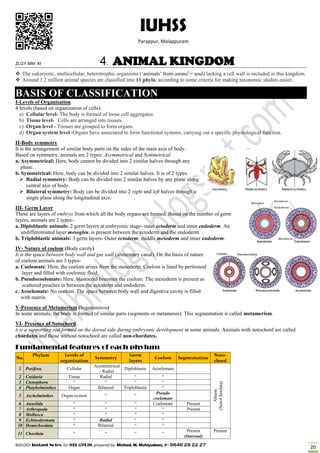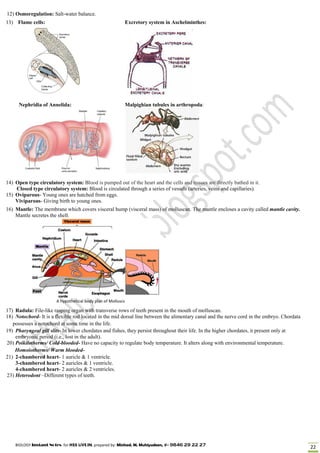This document provides an overview of the animal kingdom, including the basis for classification. It discusses the 11 phyla of animals and provides the key characteristics of each phylum, including Porifera, Cnidaria, Ctenophora, Platyhelminthes, Aschelminthes, Annelida, Arthropoda, Mollusca, Echinodermata, Hemichordata, and Chordata. Examples are given for representative species from each phylum. Classification is based on levels of organization, symmetry, germ layers, coelom, segmentation, and presence of a notochord. Key terms are defined, such as asexual and sexual reproduction, indirect and direct development, and closed








